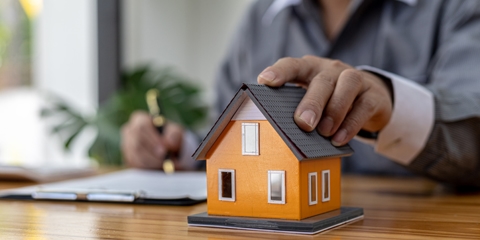For many homeowners, having a COVID-19 mortgage forbearance was a lifesaver and allowed them to stay in their homes during the pandemic. Now that things are returning “to normal,” what does that mean for homeowners who took part in the COVID-19 mortgage forbearance?
What Was the COVID-10 Mortgage Forbearance?
Under the Coronavirus Aid, Relief, and Economic Security (CARES) Act, many homeowners could take a break from making mortgage payments for up to 18 months if they wanted to. This doesn’t mean that they were forgiven from making 18 months’ worth of payments, but rather that making payments on their loan would be delayed for up to 18 months without any penalties to the homeowner’s credit. However, during this period, mortgage loans were still accruing interest, which could make it even longer before a homeowner pays off the debt.
A study by the New York Federal Reserve suggested that more than 35% of those who took advantage of the forbearance are still not making payments yet, but that will soon change. Additionally, according to the study, the most common types of homeowners who are still in forbearance are first-time homebuyers and low-income borrowers.
How to Get Back on Track
Three tips can help homeowners get back on track when it comes to having to restart making mortgage payments.
- Refinancing — For homeowners who are still within the 18-month forbearance window, and have already begun making payments back on their mortgage, they could be eligible for refinancing. The Federal Housing Finance Agency (FHFA) announced that homeowners who have made at least three consecutive mortgage payments could be eligible to refinance and buy a new home.
There are several advantages to refinancing. The most apparent advantage for homeowners who refinance is that they will have more money in their wallets each month. This is because, through refinancing, homeowners will have a lower interest rate and lower monthly payments. Another advantage is that the term for payoff can be shorter too (a homeowner could take out a 15-year loan through refinancing rather than their previous 20-year loan, for example).
While the advantages usually outweigh the disadvantages, it’s important to note a significant disadvantage many homeowners don’t realize. When choosing to refinance, there are new closing costs for the process. These closing costs are usually more than a single mortgage payment, so it’s imperative for homeowners to save up money for this additional expense, or, find a mortgage lender that does not require closing costs should you refinance.
- Sell Your Home — It’s no secret that right now is a seller’s market. Homes are being sold for well over the asking price and many are on the market for less than a week (sometimes less than a day!) By selling your home, homeowners have a chance to make enough profit to pay off the money owed on their mortgage.
According to the National Association of Realtors, existing home sale prices rose 17.2% from March 2020 to March 2021. This is excellent news for those looking to downsize and pay off their mortgage. However, the biggest struggle for homeowners will be finding another home — whether they choose to buy or rent. With inventory down 28%, according to the National Association of Realtors during that time, homeowners need to come up with backup options should they decide to put their house on the market and not have a new home lined up. It’s also critical for homeowners to consider that when selling their home, wherever they call home next that they’ll need to be able to stay on top of their mortgage payments.
- Find Other Ways to Save Money or Cut Costs — If homeowners are trying to get back on their feet and can’t refinance or sell their home, the next best step is to cut costs elsewhere. While it’s true that expenses are rising at the grocery store and gas pump, there are ways for homeowners to save. Examples include:
- Not ordering fast food or going out to restaurants;
- Selling items within your home that you no longer use or need;
- Staying in rather than go out for activities;
- Using coupons; and,
- Not making unnecessary purchases.
By utilizing these cost-saving strategies, homeowners can potentially save hundreds, if not thousands, dollars each month. Each of those dollars can be used to help contribute to the mortgage payment or be used for savings elsewhere.
- Chapter 13 Bankruptcy — Will allow you up to 5 years to get your mortgage current and keep your house if the lender is not willing to work with you on the forbearance amount of delinquency.
If you are concerned about making mortgage payments after the COVID-19 mortgage forbearance and want to explore your options, contact the team at Licata Bankruptcy Firm. Our southwest and central Missouri financial lawyers are experienced in all aspects of these types of loans and will work for your best possible outcome. Schedule your free consultation today at (417) 213-5006.


.jpg)

